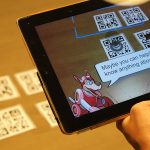 Augmented reality is proving increasingly useful in educational contexts, but a recent spin-out from Purdue University are using it in a less than conventional way. Whereas most platforms put users into virtual, but practical, environments, Explore! Interactive attempts to help K-12 students develop a better understanding of the STEM subjects.
Augmented reality is proving increasingly useful in educational contexts, but a recent spin-out from Purdue University are using it in a less than conventional way. Whereas most platforms put users into virtual, but practical, environments, Explore! Interactive attempts to help K-12 students develop a better understanding of the STEM subjects.
The platform aims to help children learn STEM via a mixture of experimentation and gamification. The goal of the platform is to make learning fun and akin to playing a game.
“Many students think of learning as boring, monotonous lectures with stacks of homework or textbooks. There are no alternatives for students who don’t enjoy or exceed with that kind of learning,” the team say. “If Explore! Interactive can spur positive emotions toward learning at an early age, we can inspire so many kids to do so much better later in their lives. We want to help promote inspiration in children as they learn.”
Affordable support
The team believe there to be a strong and growing demand for affordable technology to help children learn. It was designed after numerous teaching techniques were researched, and professionals consulted to ensure the pedagogical methods used were the right ones.
“We have been working with an educational psychologist at Harvard,” they explain. “She gave us the idea to try and make learning seem more like play, whether at home or at school. Therefore, we developed the platform so students feel like they are playing with Explore! and not just learning a specific concept.”
The tool has been developed to compliment the existing K-12 system, and the team hope it will improve the standardized test scores. The platform consists of various ‘missions’, within which students learn about a specific concept related back to the common core standards. For instance, when learning about science, they may be placed within a lighthouse, where they can learn a range of concepts around electricity.
It will go through the next stage of testing this autumn, with a new range of interactive features due to be rolled out. They will be working especially closely with teachers during this phase to monitor how the platform impacts their work. Schools in Indiana and Massachusetts will be used during this testing phase, and if all goes to plan, it will be rolled out directly to schools and parents.